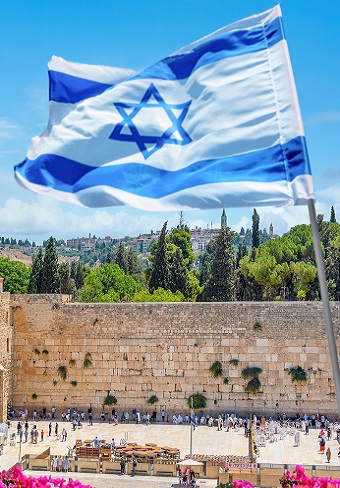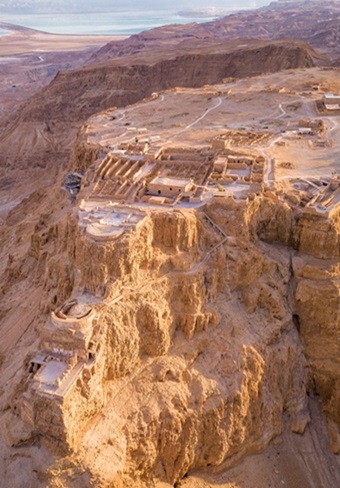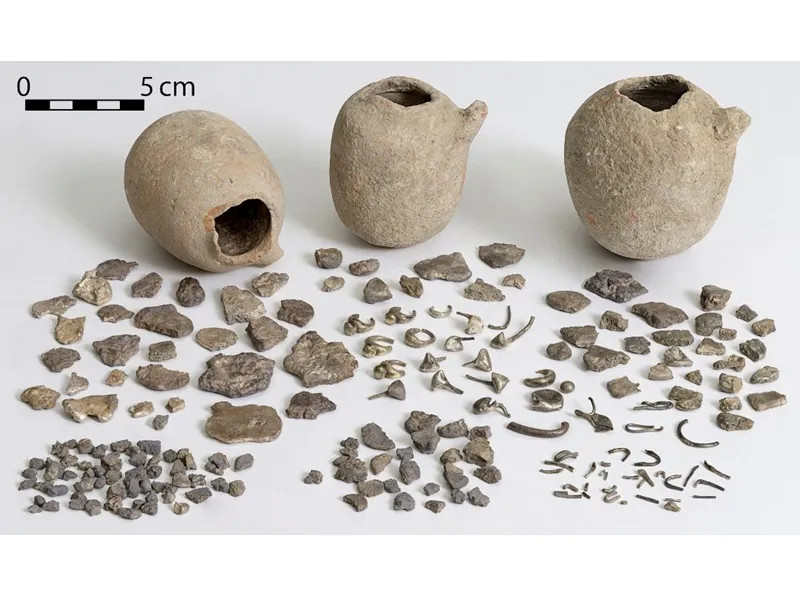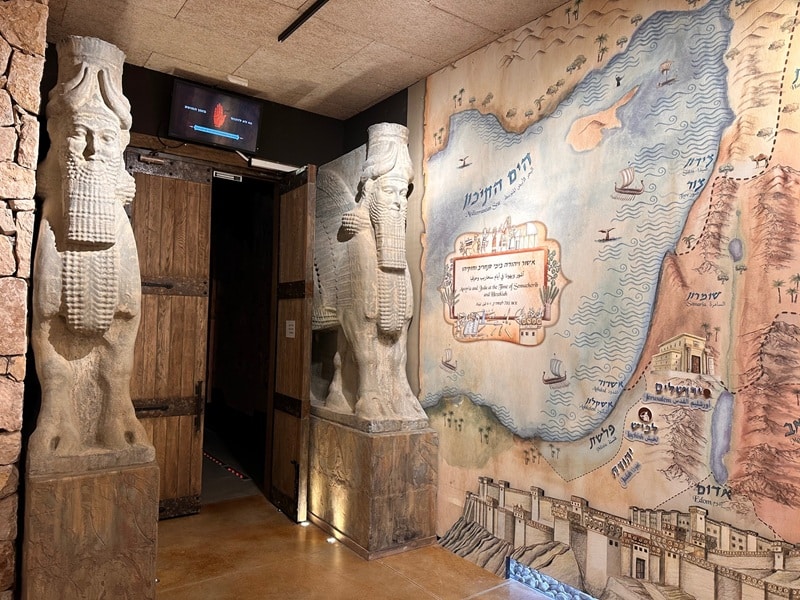The Arab Palestinian “Indigenous Population” Argument – Myths and Facts
With the recent events in Gaza I found myself replying to many accusations against Israel on social media and propagating for Israel. Many of the claims were baseless or pure antisemitism, but some do require a detailed reply.
Perhaps the most powerful argument of the Palestinian-Arabs in the conflict over the land is that they are a “native” or “indigenous population,” while the Jewish-Zionists are a foreign population, who colonized their land.
But who is really the Holy Land’s native population?
Evidence for Jewish Presence in the Holy Land
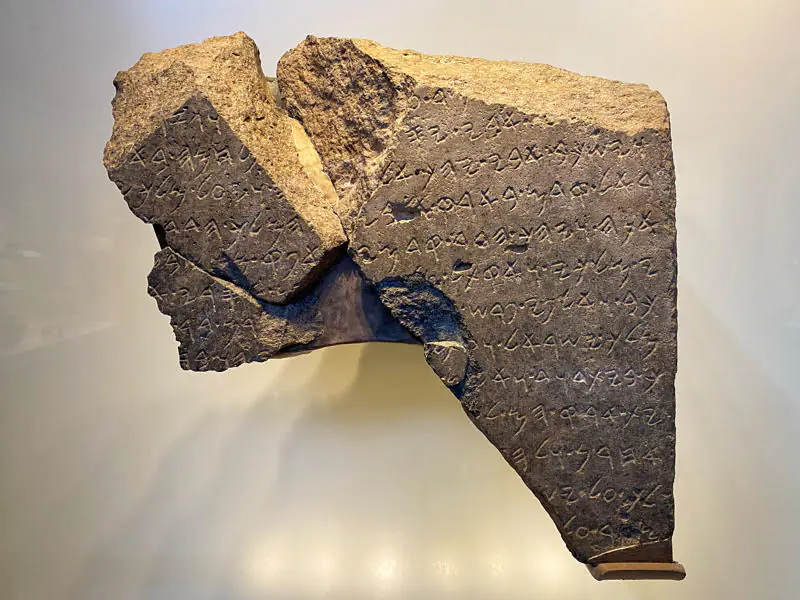
Tel Dan Inscription, mentioning Biblical King David and his Dynasty.
It is important to understand that the Jews are a native population to the Holy Land centuries before Arabs-Muslims ever settled in the Holy Land. Finds from sites like the City of David, Lachish, Megiddo and Hazor and many other sites attest to a rich Jewish/ Israelite presence here, since the 12th century BCE. The Inscriptions found in these sites are all in paleo-Hebrew, the Jewish script in biblical times. The language is almost identical to modern Hebrew, and only the letters have a somewhat different shape.

A 2,000-year-old scroll of Isaiah found next to the Dead Sea.
The Jews also thrived in the Holy Land in the Roman period. This is especially attested in the remains of the magnificent Jewish Temple that once stood in Jerusalem. The Pool of Siloam and the Southern Wall Archaeological Park are perhaps the best testimony of the Jewish pilgrimage to that temple. Furthermore, the Dead Sea Scrolls attest best to the Jewish identity of the population. And the text is so clear, that in most cases an Israeli child can easily read these 2,000 year-old documents. Not many cultures can show such a long connection to their land, proven by archaeological discoveries.
The Jews also thrived in the Holy Land in the Byzantine period. Aside the historical records, this is well attested, again, by archaeological discoveries. Over 130 Byzantine-era Jewish synagogues are known, in all regions of the Holy Land.
Evidence for Arab Muslim Presence in the Holy Land
On the other hand, before the 7th century CE no mosques are recorded in the Holy Land, and there is only 1 known Arabic inscription, found in Avdat.
The Muslim conquest of the holy land in the 7th century CE was followed by a policy oppression and high taxation of the Jews and Christians. Other populations were forced to convert to Islam. The result was a massive depopulation of the Holy land, especially in the Negev, whose towns were simply abandoned. In Nitzana a rare archive included letters of the population attempts to complain and reduce the increasing taxes, to avail. All of the Synagogues, both Jewish and Samaritan, and most of the Churches were abandoned in that period (7th-9th century CE) and never settled again.
The Crusaders period (12th-13th) brought a revival to the Christian presence in the Holy Land, but the dwindled Jewish population continued to suffer, now also from Crusaders’ religious intolerance. Once the Crusaders were expelled (1291 CE) the land became desolate. In the Ottoman 1525 CE census only 120,000 people were counted, and about 300 years later, in the early 19th century, the local population was merely 300,000.
However, in the 19th century we witness a dramatic growth of the local Arab population, and by 1947 they counted 1.3 million. This sudden growth is clearly a result of large-scale immigration of Arab Muslims into the region from neighboring countries, because of two main reasons –
- between 1831-1840 the Holy Land was under Egyptian rule. About 100,000 Egyptian Arabs settled in the Holy Land during that time.
- In the following decades, because of the unprecedented development of the Holy Land by the British, the Zionists, and the German Templars, many Arab Muslims further immigrated to the Holy Land.
This can be tracked easily by examining the family names of many of the ‘Indigenous’ Palestinians:
Al-Masri, Al-Alexandrouni, Al-Damiat, Abu-Hassin, Abu-Sitta, Abu-Salam, Ibn-Saad, and more – immigrants from Egypt.
Dajani, Tamimi, Husseini, Jabrin, Abu-Nasser and more –immigrants from Saudi Arabia.
Allwai, Halebi, Hourani, Nashashibi and more – Immigrants from Syria.
Al-Yamani, Al-Hasasneh, Murad, and more – Immigrants from Yemen.
Faruki, Al-Tachriti, Al-Baghdadi, Zouabi and more – immigrants from Iraq.
Badir, Abu Hafita – Immigrants from Trans-Jordan.
Al-Arj, Al Mughrabi – Immigrants from Morocco.
Ayubi, el-Kurd – Immigrants from Kurdistan.
No wonder that in 2012 Fathi Hamad, a minister in Gazam stated that most of the population in Gaza is from – Egypt (see video).
Furthermore, Jewish immigration to the Holy Land did not start only with the Zionist movement in the late 19th century. Jews settled in the Holy Land following the Jewish expulsion from Spain and Portugal in 1492. Are they less ‘natives’ then the 100,000 Egyptian Arabs who were settled in the same land?
Conclusion
The term ‘indigenous Palestinian population’ is very misleading. Technically even Golda Meir was a Palestinian. Up to 1948 she carried a Palestinian passport (see video).
About half of the Arab Palestinians claiming to be a ‘Native population’ are really of 19th and early 20th century job seeking immigrants. The Zionist Jews, on the other, are simply Jews re-settling their homeland.
So who is the native population of the Holy Land / Palestine? And sadly, while the Jews are willing to share the Holy Land with the Arabs, the Arabs, repeatedly, don’t.
Why the Arab Palestinians are NOT Canaanites
In line with their claim of been a ‘native population’, in the past the Arab Palestinians claimed to be descendants of the Philistines. But are they? For one thing the Philistines themselves were immigrants from Greece. They spoke a dialect of Greek and worshipped Philistine and Canaanite gods. Moreover, in western cultures, the Philistines are perceived as barbarians.
Realizing this, in recent years the Arab Palestinians changed their claim, and argue to be descendants of the Canaanites. However, the Canaanites also did not speak Arabic nor did they worship Allah. They spoke a Canaanite, which is close to Hebrew, and worshipped a pantheon of Gods.
The cultural roots of Arab Palestinians, most of which are Muslims, are in the Arabian Peninsula. It is the source both of their language, and their religion. They originate in the Arabian Peninsula, and that is the only place where they can claim to be an ‘Indigenous population’.






